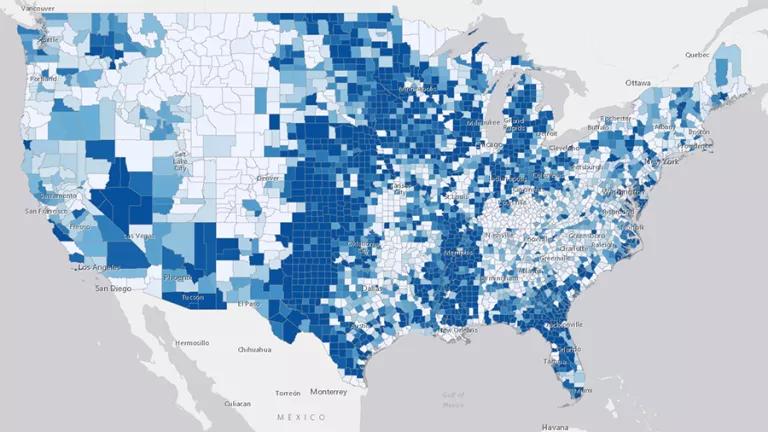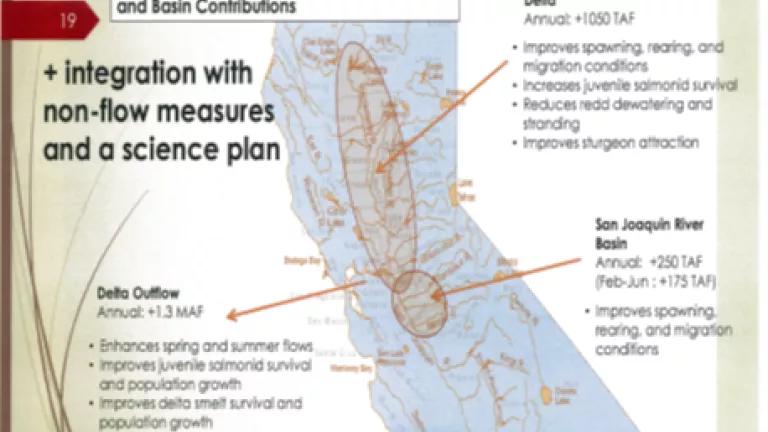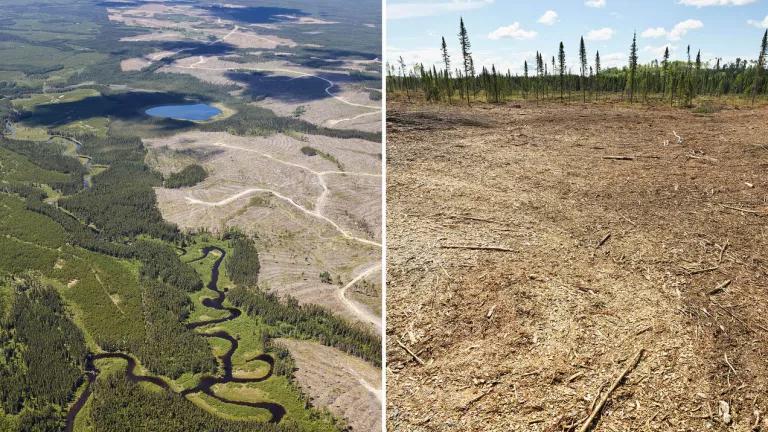NRDC Map Demonstrates Nation's Reliance on Groundwater Amid Growing Water Scarcity Crisis

In the United States, we use groundwater for virtually everything and we're devouring it up faster than nature can replenish. The overuse of groundwater supplies can have significant environmental and social impacts, such as groundwater quality degradation, damages to infrastructure from land subsidence, and loss of habitat to groundwater dependent streams and wetlands.
Whether it's the drinking water from our faucets, the water that grows our food, sustains our livestock, or produces electricity, there's a great likelihood that this precious resource originated from groundwater. In all, it was estimated that groundwater withdrawals supplied ~22% or about one-fifth (79,000 million gallons per day --MGal/d) of the nation's total water withdrawals across major water users. According to the USGS, the top water use consumers in 2010 in the U.S. were thermoelectric power (~45%), irrigation (~32%), and public supply (12%).
However, groundwater withdrawals by sector were largely dominated by irrigation (62%) and public supply (20%) (of the ~79,000 MGal/d of groundwater withdrawals).
Food production is dependent on the availability of groundwater supplies. Recently published literature in the Proceedings of the National Academy of Sciences of the United States of America (PNAS), researchers estimated groundwater accounted for 18.5% of the total cereal supply in the United States.
Groundwater Dependency in the U.S.
Understanding where our water comes from and what scarcity means to our daily lives is often elusive or abstract. I've created an interactive map (below) to illustrate the distribution of counties which were most dependent on groundwater withdrawals (This map was based on USGS data published in November 2014 regarding water withdrawals from 2010).
The darker the shade of blue, the more the county was reliant on groundwater withdrawals to meet total water demands. The counties with the darkest blue shade had groundwater withdrawals representing >90% of the total water withdrawals. The counties with the lightest blue shade had groundwater withdrawals contribute <10% of the total water withdrawals. (Click the arrows in the top left to see the legend).
Next, to see the groundwater withdrawals by sector (irrigation, public supply drinking water, private groundwater supply, mining, etc.), click on the ARROW TO THE RIGHT of the pie chart. Scroll over the bar to see the groundwater withdrawal sector and extracted volume (MGal/d).
Highly groundwater dependent counties are not concentrated in any given area and located all throughout the U.S.; such as the Great Plains, Florida and the Southwest. This map shows that groundwater withdrawals are disproportionately located throughout the U.S. and the majority of Americans' daily lives are somehow impacted by groundwater availability. Try clicking on the county where you live to see the total amount of water withdrawn, the relative percentage came from surface water or groundwater, and the predominant groundwater users.
A Depleted Resource
Given that groundwater use has a significant role in our daily lives; it is alarming that new scientific research shows that we're increasingly pressing this invaluable resource. Groundwater aquifers across the country are stressed. These aquifers, such as the high plains (Ogallala) aquifer and central valley aquifer in California, provide a reliable source of fresh groundwater to the some of the largest agricultural and livestock production regions in the country. Overpumping has led to groundwater depletion, which means more net water is coming out of the ground than what is being put back in by rainfall or infiltration - the process when water on the surface enters the soil. Severe groundwater depletion was reported in a USGS report which estimated the volume of groundwater depleted for the entire US as of 2008 would theoretically cover the state of Pennsylvania in 27.5 feet of water.
That data was from seven years ago and reliance on groundwater has increased regionally. Groundwater depletion in the high plains (Ogallala) aquifer increased between 2011 and 2013, and water levels in some wells have dropped more than 150 feet.
Historic drought conditions in California have prompted many to drill groundwater wells at unprecedented rates. Researchers at UC Davis estimated that California supplemented roughly 5.1 million acre-feet of groundwater to meet lost surface water supply in 2014. To make the situation worse, some research suggests climate change has exacerbated the drought, implying future droughts and reliance on groundwater supplies will only increase.
Overpumping groundwater forces well levels to decline, leaving no option but for users to drill deeper wells. California state water agencies have estimated that roughly 1,900 wells have gone dry and claimed new wells are being drilled to 4,000 feet deep. Subsequently, drought conditions in California have persisted, and drilling for water wells in Tulare County has tripled between 2013 and 2014.
Sustainable Groundwater Management
Sustainable groundwater management is a national issue, and we have the tools necessary to take action on this issue immediately. First, we need to establish a robust and dynamic groundwater level monitoring network. Many of the reports of groundwater depletion cited here have a several year lag time due to the significant complexities of data collection and analysis. The USGS currently monitors groundwater wells throughout the U.S., however funding support is dwindling prompting some monitor wells to be brought offline.
Next, there are a multitude of water efficiency procedures we can implement to curve groundwater demands. NRDC has developed specific recommendations and solutions for increased water saving's to deal with drought conditions in California in a June 2014 report. While specific to California, these efficiencies measures and others could be deployed in other regions.
Finally, NRDC is currently working on multiple avenues to strengthen state and federal policies concerning preservation of groundwater quantity and quality.
We need to promote sustainable groundwater management strategies, rather than conducting a 'race to the bottom' experiment in several of our most productive aquifers. When that occurs, any meaningful long-term groundwater management strategies will be too late. The loss of sufficient and reliable access groundwater would have devastating impacts to the economy, the environment, and people's everyday lives.



